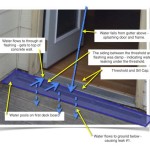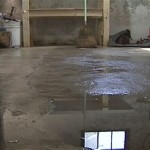How to Frame a Basement
Framing a basement is an important step in the process of finishing a basement. It creates the structure for the walls, floors, and ceilings, and it also provides support for the plumbing, electrical, and HVAC systems. Framing a basement can be a challenging task, but it is one that can be completed with the right tools and materials.
Materials Needed
The following materials are needed to frame a basement:
- Framing lumber
- Insulation
- Drywall
- Nails
- Screws
- Caulk
Tools Needed
The following tools are needed to frame a basement:
- Circular saw
- Miter saw
- Nail gun
- Screw gun
- Hammer
- Level
- Tape measure
- Chalk line
- Safety glasses
Safety Precautions
Before beginning to frame a basement, it is important to take the following safety precautions:
- Wear safety glasses at all times.
- Use a dust mask when cutting or sanding.
- Be aware of your surroundings and be careful not to trip or fall.
- Use caution when using power tools.
Steps to Framing a Basement
The following steps will guide you through the process of framing a basement:
- Layout the walls: The first step is to layout the walls of the basement. Use a chalk line to mark the location of the walls on the floor. The walls should be spaced 16 inches on center.
- Cut the studs: The next step is to cut the studs. The studs should be 2x4s and they should be cut to the height of the basement walls. Measure and cut several studs at a time to save time.
- Frame the walls: The next step is to frame the walls. Place the studs in the wall layout and nail or screw them together. The studs should be placed 16 inches on center and they should be flush with the top and bottom plates.
- Install the insulation: The next step is to install the insulation. The insulation should be placed between the studs and it should be cut to fit snugly. The insulation will help to keep the basement warm in the winter and cool in the summer.
- Install the drywall: The next step is to install the drywall. The drywall should be cut to fit the walls and it should be attached with nails or screws. The drywall will provide a smooth surface for painting or wallpapering.
Tips for Framing a Basement
Here are a few tips for framing a basement:
- Use a level to make sure that the walls are plumb.
- Use a chalk line to snap lines for the studs and the drywall.
- Predrill the holes for the nails or screws to prevent the wood from splitting.
- Caulk the seams between the drywall and the studs to prevent air leaks.

How To Frame A Basement Wall Step By Et Painters

Basement Framing How To Frame Your Unfinished

How To Frame A Basement

Basement Framing How To Frame Your Unfinished

Insulating And Framing A Basement

This Is How To Frame A Basement According Mike Holmes Hgtv

Tips For Framing Basement Walls Semigloss Design

Framing A Basement In Denver Elkstone Basements

Tips For Framing Basement Walls Semigloss Design

This Is How To Frame A Basement According Mike Holmes Hgtv







